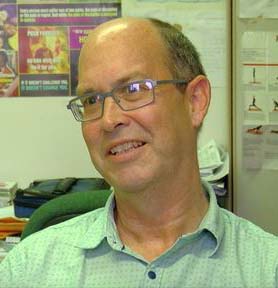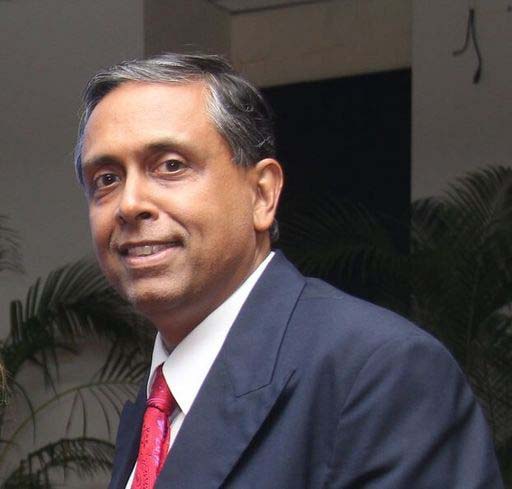(Trinidad Guardian) Public health officials should expand COVID-19 testing to target asymptomatic patients to gather adequate data to determine if the country has any community spread of the coronavirus, two members of a regional COVID-19 task force have said.
Professor Terrence Seemungal, a specialist in respiratory illness, and Dr Christopher Oura, who studies the transmission of viruses, said the Ministry of Health should “relax” its adherence to the World Health Organisation (WHO) guidelines for testing since the current data is too narrow to make definitive conclusions.

“My feeling is that unless we test more, we won’t be able to know when we have spread in the community until it becomes bad,” Seemungal told Guardian Media in a joint interview with the experts on Friday.
After T&T became ensnared in the global reach of the coronavirus just over a month ago, some people began expressing concern that the true number of infections was not known because testing has been too conservative.
The Opposition has seized on the suspicion in recent days, calling for more testing and accusing the government of “misleading” the public.
Chief Medical Officer (CMO) Dr Roshan Parasram has insisted there is no evidence of community spread, which occurs when people are not sure how or where they have become infected.
But Oura pointed out that T&T still knows little about one category of transmission: people who are infected but never show signs of COVID-19.
“We need to understand whether there is this underlying asymptomatic spread,” the UWI virologist said.
“We hope we haven’t got it because we don’t have many people dying in hospital, we haven’t got people at the moment with lots of severe clinical signs that would be consistent with many other countries.
The CMO might well be correct in what he says, I’m not saying he is wrong in any way. But I think at this stage we need to be sure that this is not the case.”
In the US, research cited by the Centers for Disease Control and Prevention has shown the number of asymptomatic carriers could be as high as 25 per cent. Parasram and Health Minister Terrence Deyalsingh have repeatedly said the country is following the testing regimen recommended by the World Health Organisation (WHO). Laboratory testing guidelines issued on March 22 said the case definitions for testing a suspected case are: someone with acute respiratory illness who has travelled, who had contact with a confirmed or probable case and someone who has no “alternative diagnosis” for the symptoms.
“The health system in any country is responsible really to the country, it’s not really responsible to the WHO,” Seemungal said.
“WHO’s role is guidance. In a case like this they have adopted a very conservative approach and we have the health of a nation to consider. They will have the world public health system to look at it so they will have their reasons for that, but we have to look at our situation here in Trinidad, what the cost would be if this disease got out of control given that we have already had a cost to society because of the ‘lockdown,’ if I could use that term loosely. An economic cost.”
Oura added that data from expansive testing could shape public health guidelines as the country contemplates a road map to reopening the borders and reactivating the economy.
Some countries have already expanded testing beyond the WHO prescriptions. Iceland, considered one of the success stories of the pandemic, has offered COVID-19 testing to anyone who wants it.
The wide net has produced data that show half of the infected persons there never had symptoms. Iceland has roughly one-quarter of T&T’s population, with just over 1,700 cases and nine deaths.
While the country now has one of the highest per capita rates of confirmed cases in the world, it has been able to manage the pandemic because it tested more people per capita than anywhere else.
Neither Seemungal nor Oura advocated for T&T replicating Iceland’s approach.
“The last thing we want is everyone with a sniffle or haven’t gotten any clinical signs wanting to be tested,” Seemungal noted.
“It’s expensive, and we’re also dealing with lots of people having to [conduct] the testing, this particular antigen testing is quite difficult to do.”
Both medical experts said it is difficult to set a target for the number of tests that should be done since there is not enough data on the rate of transmission to make such a forecast. Seemungal suggested using a “looser” case definition that expands the criteria on the symptoms that would qualify someone for testing.
“So they go to their doctor in the community with, for example, symptoms like loss of taste, loss of smell, or even diarrhea because some patients, a small number in studies that have come out, do only have gastrointestinal symptoms and the doctor decides they need it but they can’t get a COVID-19 test for someone like that.
“So what I’m saying is to relax it a bit. You will expect that in the first few weeks until the medical profession gets a feel for the disease because we don’t have that feels right now, there may be a bit of over-testing, but once things settle down and they compare the results they get back with the symptoms of the patient, they get a feel for when they need to do the test and then they follow that.”
He said where people can afford it, they could be asked to pay a portion of the cost for the test.




